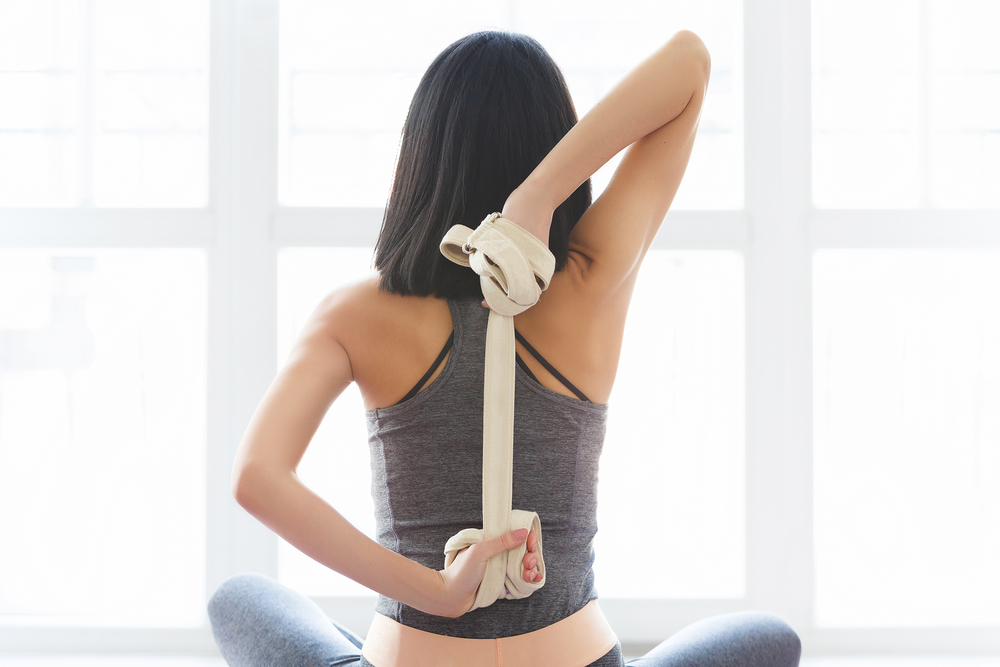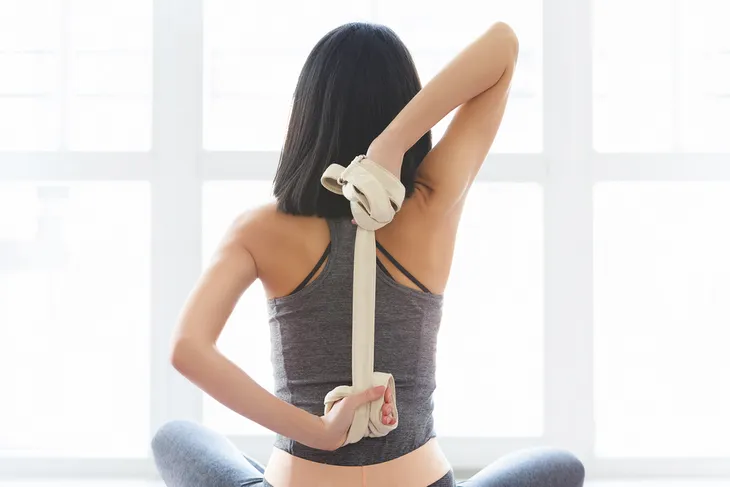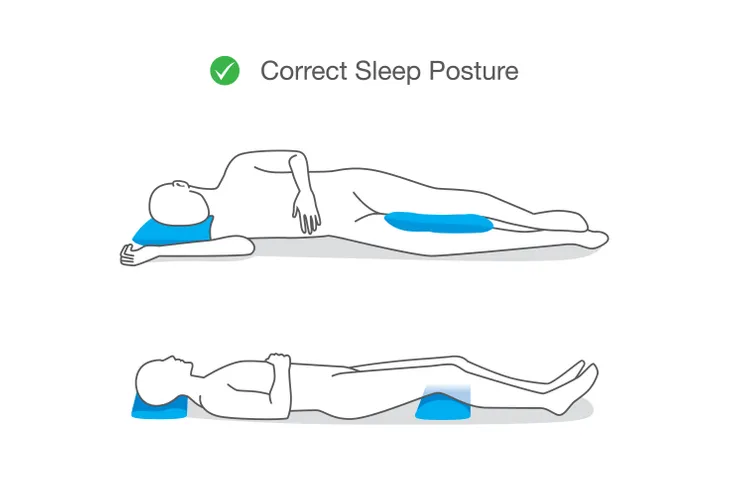If you’ve seen your mom lately, she probably told you to stand up straight. When we spend our days sitting in front of computer screens, driving, or looking down at paperwork, slouching becomes a habit.
Our shoulders hunch and our backs curl unconsciously, and it’s hard to get back to proper posture. Not only does a sloping posture put stress on muscles—it can also have a negative effect in terms of how you are perceived.
Here are 10 tips to get you standing up straight and taking up space…
Stretch Your Chest
Your tight chest muscles are pulling your shoulders inward. The curve in your spine follows, and next thing you know you’re practically in a ball. As stated by Paul Ingraham, former massage therapist and editor of Science-Based Medicine, the pectoralis major is a very large and strong muscle. If you keep them tight, they will overpower the antagonist’s back muscles, which are responsible for pulling them back in place, and cause a hunching posture.
Although not many people think of stretching out their chest, it’s easy! Find a doorway, stand in the middle and put both arms on the frame at a 90-degree angle. Step gradually forward through the doorway until you feel the stretch. Hold for 1-minute. You’ll feel your chest open up almost immediately.
Strengthen Your Core
There are countless stabilizer muscles in your core that are meant to keep you in an upright position. But if you never use them, they’ll weaken and forget to do their job. A couple of crunches at the gym won’t do the trick. Yoga expert and founder, Julie Gudmestad, from Portland, Oregon-based Gudmestad Yoga says “ I could relate dozens of cases with people whose sometimes chronic, severe back pain was greatly improved or even eliminated by strengthening the support system of the core”.
Weak muscles in this area are directly linked to back pain. Dr. Martin, an instructor of orthopedic surgery at Dartmouth Medical School, notes that people with back pain spend an average of 3,000-dollars more on health care than those without. This is not taking into account costs of missed work days or diminished productivity, not to mention the mental and physical toll that comes with living with chronic pain. Spend some time on your core to avoid all of this.
Do Yoga
A big part of correcting your posture is becoming aware of it. If you think about your posture enough, it will just become second hand nature to stand properly. Yoga is a practice that draws a lot of attention to proper posture. Reminding yourself through the day is hard, but your yoga instructor will definitely bring your attention back to your posture.
Yoga instructors call to attention small details of postures that help us correct. Often there are wall mirrors that can let us see what an upright position should look like. It is common to be encouraged to stay in a posture and breathe, and this promotes the habit of staying open and straight. More importantly, yoga teaches us to be in tune with what our body is telling us. If we become good at listening to our bodies, we will be able to tell when we’re slipping and slouching.
Use a Posture Strap
Despite the best of intentions, it’s almost impossible to keep reminding yourself about your posture throughout a busy day. We can’t rely on our minds to think about something that’s supposed to be second nature. Luckily, we don’t have to. Get started with a posture strap, and turn good posture into a habit.
Kathryn Budig, a yoga teacher and a writer for the Yoga Journal, speaks about the anti-slouch yoga strap trick. It involves using a cloth yoga band to create a sling for your shoulders, coaxing them into proper position. Place the cloth at the base of your shoulder blades, create an X on your back and let the straps come around the front like overalls.
Let Go of Stress
When we feel the effects of poor posture, such as a strained back or a kinked neck, we often think it happened incidentally. It was that bike we lifted out of the car, or we pushed ourselves too hard when we last did bench press. The truth is, the injuries are born from the stress of our everyday lives.
Sadie Nardini, the renowned yoga “rock star”, empowerment speaker, and Healthy Hedonism lifestyle leader has been an yoga and anatomy expert for over 20 years. Nardini says the best way to cope with physical misalignment in your posture is to focus on emotional alignment in your life. For example, if you feel anxious around your boss, that anxiety can cause tension in your shoulders, “Which then start radiating because they are connected to your back-body line, and cause a tight neck, tight low back, tight hamstrings,” she says.
Change Your Texting Habits
Many of us are examples of the inevitable smartphone slump. When we look down at our phones, we shrug our shoulders upwards and curve our back into a hunching position. Experts at Surgical Technology International say that texting can add up to 50-pounds to your spine. That’s a heavy load to carry around when we use our smartphones constantly.
It’s unrealistic to try to abandon technology to give our spines a break. But we can change our texting posture. Holding the phone up towards your face with a neutral spine will take away the stress of the hunchback posture. According to Surgical Technology International, every 15-degree raise of the phone alleviates a considerable amount of pounds of stress off the spine.
Arrange Your Workspace
Most of us spend a large majority of our day at work. Set yourself up for posture success while you’re there. It’s much more tempting to slouch while you’re sitting down. National Institutes of Health research indicates that we sit for an average of 7.7-hours of our day! If at all possible, ditch the chair for a while. Stand as you work, or make a point to take a lap around the office every hour, to avoid the seated slouch.
When you are sitting, arrange the space around you to promote good posture. The American Academy of Orthopaedic Surgeons (AAOS) makes suggestions as to how to go about this. First, choose a chair that can be adjusted for height and tilt the lower back support to match your natural spinal curve. The work surface should be about 1- or 2-inches above your thighs. The keyboard should rest in-between your body, and the computer screen should be far enough from your face that you can keep a level gaze, but not too far that you’re leaning into it.
Sit Properly Behind The Wheel
A national in-car study conducted by Arbitron revealed the average American spends more than 15-hours a week in the car. If you spend those 15-hours slouching, your body will be screaming at you down the road.
Chris Adams, a human factors engineer, industrial designer, and ergonomics expert, offers some tips for proper behind the wheel posture. Make sure your legs are not scrunched up and you can reach the pedals with your thigh relaxed. The steering wheel should be set so that it rotates naturally with the up and down movements of your arms, and doesn’t require chest muscles to move. Line up your mirrors so that you can see without straining. Using your rear view mirror as a reference—if you’ve slouched lower you’ll notice you can’t see through it anymore!
Avoid Sleep Slouching
Even with a proper work environment and a perfectly adjusted driving posture, sleeping in a poor posture can destroy all your progress. After all, we spend a huge amount of time sleeping! Sleeping postures are very challenging to change—we all have a favorite, and when we crawl into bed we just want to be comfortable. But try to be aware of what shape you take before you fall asleep.
Doctors at Physio Works recommend sleeping in a posture that maintains the natural curve in your lower spine. The best posture for this is lying on your back with a pillow under your knees. If this is uncomfortable, lying on a side with knees slightly bent works also. Be conscious of how your head hits the pillow before you fall asleep. Your neck shouldn’t be too tucked or craned upwards.
Check In
If you can remember, try to do a mental posture check when you can. Dr. Kenneth K. Hansraj, a spinal and orthopedic surgeon, gives us some things to focus on. He says, “Your spine is at its happiest when your ears fall on the same plane as your shoulders, and your shoulder blades are retracted.” Think to yourself—ears over shoulders…shoulders back…navel in…stand up tall.
At first when you’re trying to kick the slouching habit, leave yourself notes on the mirror or by the fridge to remind you to think tall. Have a friend work on this with you and ask them to tap you on the back when they notice you slipping. Use visual references if you’re sitting down-some mark on the wall that you should see straight ahead if you’re sitting up properly. After a while you won’t have to think about it so much.













